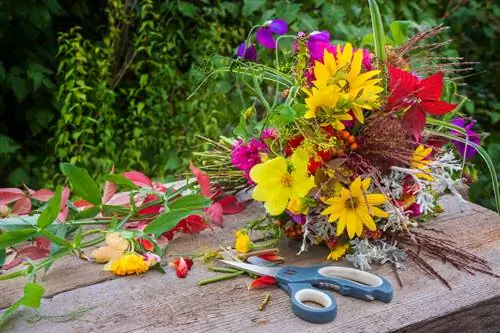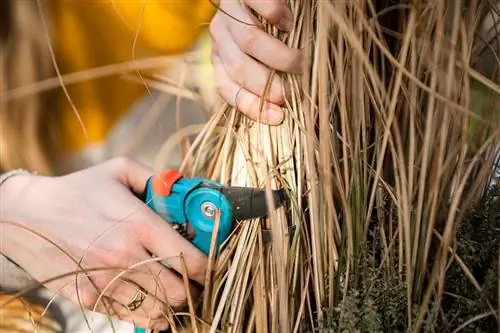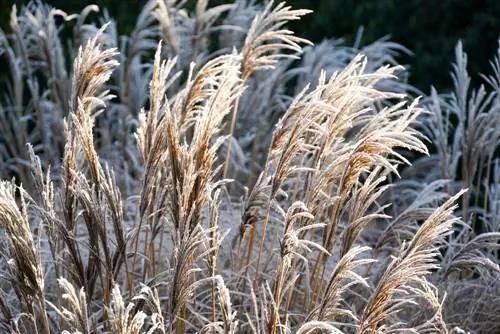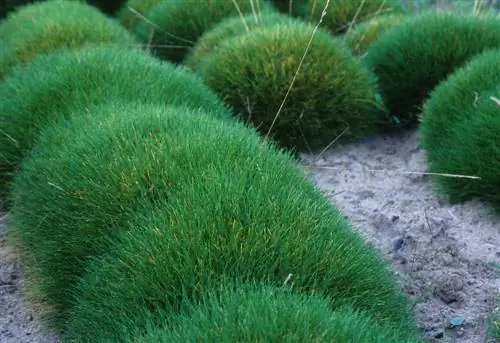- Author admin [email protected].
- Public 2023-12-16 16:46.
- Last modified 2025-01-23 11:20.
With their feathery flower spikes, they sway in the wind and are an ornament in summer as well as in autumn and winter. You should either not cut ornamental grasses at all or cut them properly. Basically it can be said: correct cutting benefits your growth.

When and how should you cut ornamental grass?
Ornamental grasses are best cut in spring between mid-February and early March. Stalks and leaves should be rolled up in bunches and cut off just above the ground (10 to 15 cm) with a sharp knife or secateurs.
Don't cut off the natural winter protection
The above-ground plant parts of ornamental grasses - stalks and leaves - serve as natural protection during the winter, including against moisture in the root area. If you cut off the plant parts in the fall, you risk that the ornamental grasses will suffer from water accumulation in the winter.
Why? When the stalks are cut or shortened, they are opened and water can enter the tubes. It flows down to the roots, where it can provide moisture. However, larger grasses such as pampas grass or miscanthus should be tied together so that they do not bend over in winter.
Reasons against pruning in autumn
Pruning ornamental grasses in autumn is not recommended for these reasons in particular:
- Straws drain water to the sides
- provide shelter for insects and birds
- The risk of rot is significantly reduced by leaving the plant parts
- Ornamental grasses serve as valuable decorations over the dreary winter period (ornamental flower/seed heads)
The best time to prune is in spring
After wintering, you can cut your ornamental grass. In spring, the best time for this is between mid-February and early March. The cut should be done before sprouting or when the new stalks and leaves begin to sprout.
Be careful not to damage the new shoots when cutting! The advantage of pruning is, on the one hand, that the ornamental grasses now look better and, on the other hand, that the new shoots can grow unhindered.
Cut down to just above the ground
How to cut your ornamental grass correctly:
- gather in bunches
- take a sharp knife or secateurs
- Cut stalks and leaves just above the ground (10 to 15 cm)
- if applicable remove dead leaves
Attention: Not all ornamental grasses need to be cut. For some species, such as feather grass, blue fescue grass and bearskin, combing through them with your hands is sufficient. Alternatively, the dead plant parts can also be pulled out. However, wear gloves to avoid injuring yourself on the sharp-edged leaves!
Fertilize, divide and propagate after cutting
After cutting back in spring, the perfect time has come to lightly fertilize the ornamental grasses, for example with compost. This time is also ideal for digging up the ornamental grasses, dividing them and thus rejuvenating and increasing them.
Tip
If you don't want your ornamental grass to self-seed, you should cut off the flower heads in the fall.






